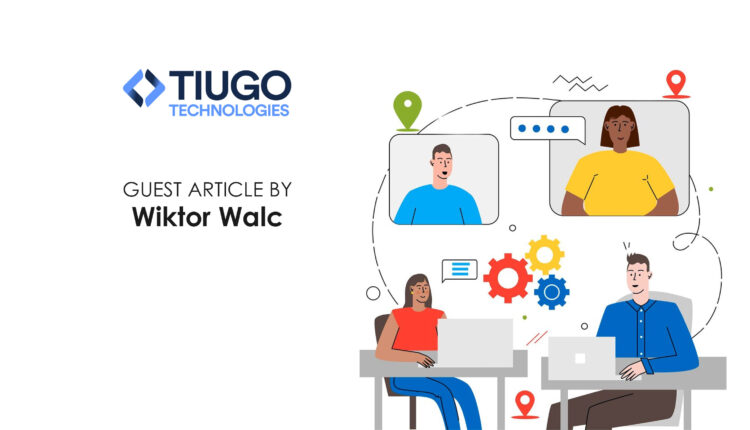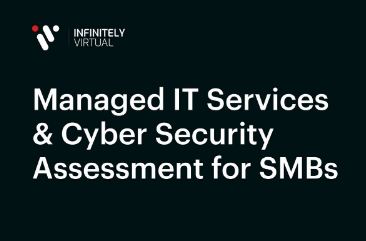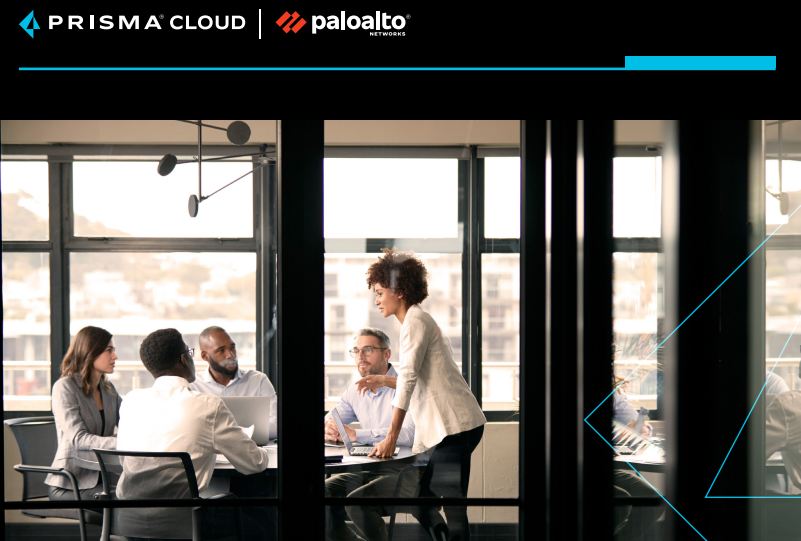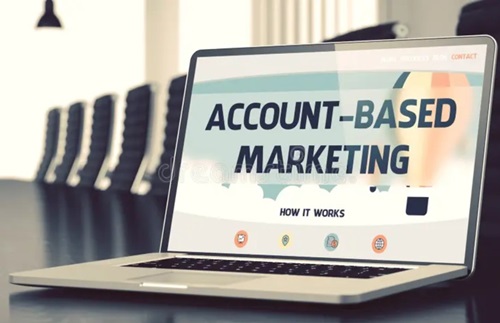
Making Mental Health a Strategic Priority Across the Organization
Making Mental Health a Strategic Priority Across the Organization
Andrew* was passionate about saving our planet, so he was thrilled to land a job as a sustainability coordinator for a school campus. But soon he began to struggle. On top of his generalized anxiety and bipolar disorders, he started to have extreme fears about climate change, known as eco-anxiety. He grew more anxious and agitated, and soon couldn’t sleep more than two or three hours a night.
Stigma around mental health, fear of losing his job, and concerns about anonymity with his employee assistance program prevented Andrew from sharing his struggles and seeking help. Eventually, without access to the right mental health care, Andrew became so distressed that he turned to drugs and alcohol to cope. When he could no longer hide his increased substance use, his supervisor told him he could seek treatment or be fired.
Andrew took a 90-day leave of absence and entered a treatment program, covered by his medical insurance. But without easy access to ongoing care and therapy, he relapsed within months and lost his job. Tragically, he died of an overdose a few years later.
Creating a psychologically safe space to talk about mental health at work and ensuring fast and easy access to comprehensive, high-quality mental health care are absolutely essential for employees and businesses to thrive. Otherwise, we’ll continue to see a rise in devastating outcomes—from increased burnout and substance use to overdose and suicide.
Mental health is a growing global crisis
While mental health challenges aren’t new to the workplace, the past few years have seen almost everyone touched by these issues. There’s been a huge uptick in mental health conditions worldwide, including work anxiety and burnout; stress from social injustice, gun violence, and climate change; loss of connection due to the pandemic; pressures from caring for a loved one; grief from a COVID death, suicide, or overdose; and increased substance use and suicidal ideation.
Nearly one billion people worldwide suffer from a mental health disorder. In the U.S. alone, 1 in 5 adults (about 52.9 million people) experience a mental illness. Yet just 46.2 percent of U.S. adults with mental illness receive treatment.
The costs of poor mental health and its related consequences are projected to reach $6 trillion globally by 2030, up from $2.5 trillion in 2010. That’s more than the costs associated with cancer, diabetes, and respiratory ailments combined.
These figures leave employers with their own crisis. Unaddressed mental health challenges result in more work absences, higher turnover, lower productivity, and, ultimately, higher health care costs. In a 2021 survey by the American Psychological Association, 79 percent of surveyed employees reported experiencing burnout.And workplace mental health nonprofit Mind Share Partners found that 50 percent of employees left a role due to mental health reasons in 2020—an astounding 47 percent increase from 2019.
The costs of this crisis are too high to ignore. Employees, their families, and their workplaces are all suffering from this broken system. It’s time to recognize that mental health at work is a company-wide challenge, and solving it means reimagining workforce mental health.
A new approach to mental health at work
Workforce mental health is so essential that it’s becoming a pillar of employer benefits alongside medical, pharmacy, and disability coverage. It’s crucial to notonly keep current employees healthy and happy, but also to attract new talent. Plus, it’s the right thing to do for both businesses and their people.
Lyra Health’s 2022 State of Workforce Mental Health report found that 84 percent of workers said mental health benefits are important when considering a new job. But the benefits must go beyond health plans and EAPs, which often have long wait times to see a provider and low utilization, and can be difficult to navigate.
To create a mentally healthy workforce, employers need to support employees with a comprehensive approach that not only addresses individual needs but also creates a work culture that fosters mental health organization-wide.
The right care and culture for everyone to thrive
Traditional EAPs and health plans fall short of these essentials for a variety of reasons. For starters, most workplaces aren’t doing enough to eliminate stigma around mental health which can prevent many people, like Andrew, from seeking care. In addition, employees often don’t know how to access available benefits or can’t get the kind of care they need or an appointment with the right mental health care provider when they need one. Wait times can be several weeks, which can be a big hurdle for someone seeking help and devastating for someone in crisis Even if employees do get care, they may have a negative experience, such as bad rapport with a provider, scheduling problems, or unchanged symptoms. Limited benefits and switching to other providers may lead them to stop care before getting better as Andrew experienced.
To overcome these issues, companies must reimagine their approach to mental health at work one where organizations aren’t piecing together solutions and employees aren’t navigating confusing benefits that often don’t help. This reimagined approach should include
• A personalized experience for every employee and every need
• Easy access to a network of global providers that delivers culturally responsive, localized care where and when it’s needed
• Organizational development tools to help companies build cultures of mental wellness that support the entire workplace population.
Just as essential as a culture of mental wellness is high-quality mental health care that results in measurable, meaningful improvement for employees and their families. We’ll outline how organizations can achieve these goals—and the benefits of doing so.
A personalized, concierge care experience
For employees to seek care and stay engaged with their care, the experience should be personalized, easy, and seamless with help available every step of the way.
Having 24/7 care navigators to talk to is essential, because when someone needs help, they need it in the moment especially if someone is experiencing suicidal ideation. Look for a program where employees can talk to a licensed clinician day or night to start the process or go online to get an instant personalized match with the right provider for their needs.
Key to keeping people engaged in care is matching them to a provider who specializes in treatment that is tailored to their needs and fits their preferences, schedules, and location. Also important is offering an engaging experience where members get clinically proven digital tools from their provider that help them improve faster, with longer lasting results. The ability to immediately schedule appointments, flexibility to choose in-person or online, support between sessions, and checkins all combine to create a personalized experience that keeps employees participating in treatment until they get better.
High-quality care, lifechanging outcomes
Getting a mental health care appointment in a timely manner has become so difficult that many benefits leaders have prioritized availability over quality. But as Alethea Varra, PhD, vice president of clinical care at Lyra, explains, “It’s not just about access. It’s about making sure it’s access to the right care. Care that will make a difference in employees’ lives, so they get better and move forward with their relationships, jobs, and the things that bring them joy.”
A non-negotiable with mental health treatment is that it must help someone get better. That’s why Lyra believes it’s essential to provide both excellent access and excellent quality.
The key is to look for top-tier providers who not only have availability, but also provide proven treatment methodologies and achieve real results. Few benefits leaders have time to do that research, so your program should do it for you
Every provider in Lyra’s network is thoroughly vetted using a detailed clinical questionnaire and interview. Once on board, they undergo ongoing performance evaluations and consultations, along with clinical training to ensure they’re maintaining skills and learning new, proven treatments at the forefront of mental health care.
To feel confident that your employees will experience significant improvement with care, look for the following in your mental health benefit’s provider network:
• Evidence-based treatments with proven outcomes
• High improvement and recovery rates
• Localized, culturally responsive care
Evidence-based treatments with proven outcomes
When exploring different benefit programs, make sure providers are rigorously vetted for their use of evidence-based treatments, which are backed by scientific evidence of success and validated by third parties. Look for peer-reviewed articles on their services, such as Lyra’s program, which has proven outcomes backed by nine research studies with employees and their families.
High improvement rates
Ask to see anonymized data on measurable clinical improvement, and data that proves providers are helping their clients see the outcomes they claim they are. Be sure to focus on clinical assessments, not just how people like the provider.
For example, Lyra’s program uses longstanding, validated mental health measures, including clinical cutoffs that determine whether someone meets the criteria for a mental health diagnosis and if they’ve seen reliable clinical improvement. These measures have led to an 88 percent clinical improvement rate among Lyra’s members.
Culturally responsive care
Research has shown that one of the most significant factors affecting a person of color’s decision not to seek care is the lack of racial and ethnic diversity among mental health care providers. A report from the Agency for Healthcare Research and Quality found that just 1 in 6 mental health providers are people of color themselves.
That’s why it’s imperative to choose a program with a diverse network of providers who integrate culturally responsive care into the services they provide. Culturally responsive care is the intentional and consistent decision mental health care providers make to see, respect, and celebrate the aspects that make each person unique. It’s an acknowledgment of
Easy access to a global network of verified, highquality providers
Achieving the kind of care we’ve outlined requires an extensive network of providers who are available to see clients how and when they need care, including in-person, virtually, and through live text sessions.
If you don’t have a good network, you’re building a bridge to nowhere. Waiting months for an appointment can lead to a significant decline in someone’s mental health. Or worse, it can lead to foregoing care altogether.
Maria Druse, vice president of human resources at VCA Animal Hospitals, describes the challenges her people had when trying to get care: “I used to lose a lot of sleep because I worried about our employees and what they would do if they needed help.” Since choosing Lyra, VCA employees now have access to a network of more than 20,000 providers across 200+ countries, so they can quickly get an appointment and be seen within two days for most diagnoses.
Find the right fit
Access to the right mental health providers is equally essential. Your provider network should cover virtually all conditions and support all family members, including young children and teens. Equally important is having local providers who are sensitive to in-country and in-context factors that can greatly impact someone’s mental health, including their location, culture, and how they identify.
Not all providers are trained to treat all disorders and challenges. Most work best with certain populations, so matching people to the right coaches, therapists, and physicians is critical for helping them get better. Offering a full spectrum of specialists facilitates this. So does collaborative care between providers, especially when treating complex conditions such as substance use disorder or suicidality.
Support for employees’ families is an often overlooked factor in a mentally healthy workplace, including family and couples counseling, and support for parents, children, and adolescents. A survey by The Jed Foundation shows that 60 percent of parents said their child’s emotional health worsened since the start of the pandemic. The stress of finding a good mental health practitioner for a child and caring for them while they’re struggling can impact the employee’s own mental health as well.
When your program has a global network of high-quality providers, your employees will not only have access to some of the best care available, but they’ll also see providers who are committed to helping them get better. Providers in Lyra’s network, for example, say referrals better fit their practice and expertise, which helps them deliver the right amount of goaloriented care. They have less paperwork, earn fair market rates, and have continuing education opportunities, especially around evidence-based treatments. This all contributes to higher-quality care.
Workforce transformation: creating a culture that supports mental health
Mental health benefits alone won’t stop the wave of workers who are leaving highstress jobs to work for companies with better mental health support. To prevent turnover, businesses must also transform their work environments.
To help support mental health, businesses can move beyond traditional EAPs and provide better benefits, resources, corporate policies, and mental health literacy programs. All of these will help create a culture where people feel safe to talk about mental health and seek the help they need
On the other hand, companies can also worsen the workforce mental health crisis by creating stressful and unhealthy work environments. This can result in burnout
and a higher likelihood that employees will experience work-related distress, discrimination, or lack of fairness or inclusion, and limited psychological safety
Moving beyond traditional EAPs and medical plans to comprehensive mental health benefits can improve mental health for everyone in the organization—not just those who know they need help. For example, a lot of employees don’t need professional care, but could still benefit from a supportive work environment and tools to stay mentally healthy, like resilience training and stress management. For those who need care but aren’t ready to reach out, fostering a dialogue about mental health can encourage them to seek help when they need it. This can be especially true with marginalized groups who’ve historically been underserved or mistreated by the mental health system.
Workforce transformation can also benefit employees who need mental health support but don’t have the tools to recognize and address this need. These employees often have little to no awareness of mental health issues and needs. Learning and development tools that improve mental health literacy and a culture that normalizes talking about mental health will educate and inform them.
“Leading employers are recognizing the great opportunity to reconsider the work experience and redesign it in a way that reduces turnover, creates higher productivity and engagement, and improves mental health,” says Joe Grasso, PhD, senior director of Workforce Transformation at Lyra. “It’s a win-win for all.”
Creating a healthier workforce
There are a variety of ways you can create a mentally healthy workforce, from work design to mental health literacy to real-time data. “A full suite of tools allows employers to reach everyone,” says Dr. Grasso. “And that matters because mental health affects everyone.”
The following initiatives are essential components of workforce transformation, and should be executive-level priorities with all managers on board.
Work design
When work is designed to mitigate the risk of burnout, the results can include better engagement, lower turnover, and shorter mental health-related leaves of absence. Implementing initiatives like increasing shift predictability, recognizing high performers, and providing mentorship opportunities for employees who want to advance can lead to lower burnout, higher performance, and greater loyalty to the company not to mention better customer experiences.
Mental health literacy
Promoting mental health literacy throughout the workplace helps employees thrive, reduces the risk of harm, and combats stigma around mental health challenges. Plus, creating more awareness around mental health leads to more employees using the resources and benefits you provide.
Campaigns to normalize the conversation about mental health
The more we discuss mental health at work, the more we empower employees to seek help when they need it. This starts with organizational policies and programs that normalize mental health and create a safe space to talk about it. Create mental health-related dialogue through company communications, team meetings, and oneon-ones. Spark conversations that get people to view mental health differently. And encourage company leaders to model healthy behaviors, like sharing their own mental health wins and struggles, taking PTO, and not working evenings or weekends.
Workplace learning
Offer easily accessible eLearning programs, on-demand interactive courses, and rich content on workforce mental health for both managers and individuals. These help build resilience and support a psychologically safe workplace.
Employee resource groups (ERGs)
ERGs provide a space to gather with likeminded people, such as BIPOC, LGBTQIA+, veterans, or women leaders, to name a few. You can further their mission by bringing in a clinical expert to start a dialogue around mental health issues that are specific to the group or train ERG leaders to promote mental health within their respective communities with support from a clinical consultant.
Dedicated support and strategic consultation from your benefits provider
Having a trusted customer success manager from your benefits vendor can help you get the most from your program, empower your managers, and better support your teams. Having access to highly credentialed mental health and organizational development experts can help you design programs tailored to your organization.
Real-time data that empowers you to be proactive
Effective workforce mental health programs provide real-time insights about your benefits and their value through a wellness dashboard. These tools let you see how many people are using the program, and what benefits are being used the most— or the least. Look for trends in different geographic areas to see if your providers are meeting the needs and if there are indicators you need to address on an organizational level, such as a spike in workplace stress or burnout.
In addition, in-depth quarterly business reports can provide anonymous data on the kinds of results your employees are experiencing. When you can prove your investment is working, you can keep it going—and keep your employees and their dependents healthy
Get the best outcomes for your people and your business
It’s essential to confirm that you’re getting the outcomes you’re paying for. And that doesn’t happen with the traditional, fixedfee, per-employee per-month model most EAPs use.
Rather than paying every month regardless of whether employees use the program or not, look for one where everything you care about is connected to what you pay. That means a benefits program where your employees are highly engaged, your health care costs drop, and you see real clinical metrics and proven outcomes—in real time and through monthly and quarterly results.
Employees experiencing meaningful, measurable improvement is directly connected to higher ROI. An outstanding concierge employee experience and a mentally healthy workforce mean more people will get the help they need and truly feel better. And that means lower turnover and absenteeism, and higher employee engagement and loyalty
According to a study in Medical Research Archives, comprehensive, proven, and evidence-based psychotherapy has been shown to lower employee turnover. The study found a 50 percent decrease in turnover during a 12-month period for Lyra benefit users versus non-users.
The need for effective mental health care has never been greater, nor the benefits more apparent
Making mental health a strategic priority across your organization is one of the best ways to attract top people, retain them, and help them thrive. It helps your business flourish, too. According to research from the National Safety Council and NORC at the University of Chicago, employers that support mental health see a return of $4 for every dollar invested in mental health treatment
Beyond the bottom line, it’s simply the right thing to do. Companies that transform their work cultures and provide easy access to high-quality mental health care will have happier, healthier, more productive, and more loyal employees
Trending News













